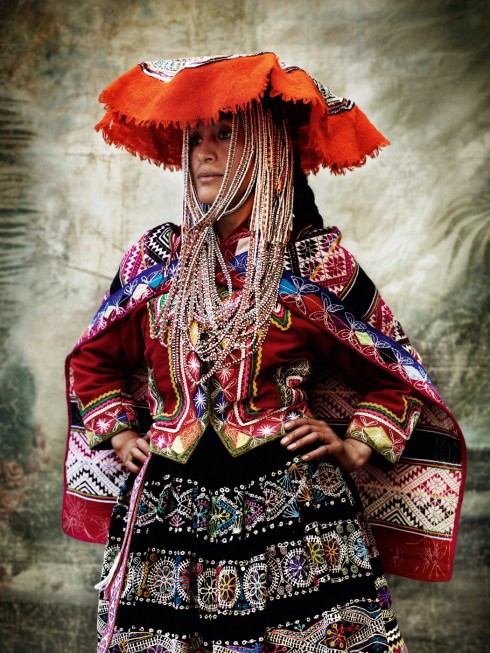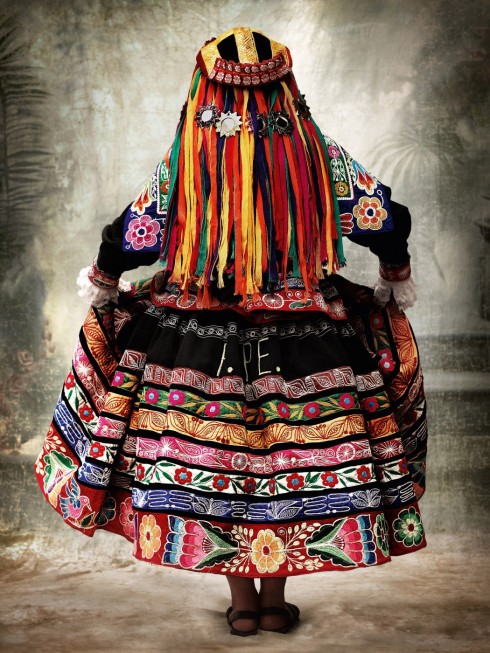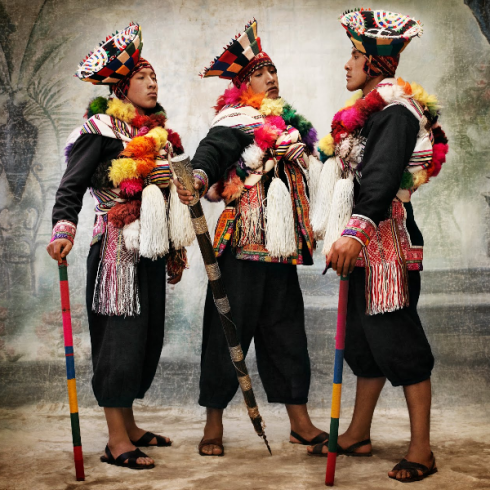Dating back almost 3,000 years, Andean societies were formally known to be the most-textile oriented culture, defining the complexities of their ethical identity through their specialized traditional cloths and textiles. Peru held the longest traditional textile production of weaving with their highly technical techniques with the process of spinning fibers together and moving them across using back-strap loom. The authenticity of the process entails the weavers to pass on these intricate skills to many generations to strictly follow their family lines for a lifetime. However according to theorist, Jules Rosette, she mentions the revolution of boundary art evolves around the interaction between artisans and consumers to become an ongoing business to meet the market demands (Demaray, Keim-Shenk & Littrel 2005). This deflects the initial intentions and aspirations of the artisans as individualism including their heritage is lost within the process, which will impure the long-established skills.
During the Inca Empire, traditional weavings were the most valuable piece of ideology that embodies abstract ideals about the physical and social world. It is a medium of free language for conceptualizing the world and communicating complex ideas that encompasses on their lifestyle from social rank to martial status. The deep connection, the weavers tend to have with their cloths is undeniably essential towards their self essence and even regarding each piece of textile to be apart of their body. Within many of the communities, by giving the textiles a human characteristic it highly elevates the status of the cloth as if it is a living being. An extract of John Cohen revealed the sentiment of how the weavers retrieve and relate to their textiles as something that is apart of themselves, since it is a secondary way to communicate with their ancestors. As he spoke with a woman in the old city of Q’ero, south of Peru, where the traditional techniques of weavings are still in proceeding especially from the beginning of the textile production.
Cohen asks, “Would you let us buy the beautiful shawl you are making, along with the loom?” The weaver answers, “No, it would be like asking me to sell you my arm.” (Cohen & Rowe 2002)
When the European invasion occurred, the Inca empire and the textile production was crushed with the Spanish laws imposing a new system, while introducing new materials of sheep, silk and metallic threads. But the weavers truly believe in using their own materials to maintain with their traditional techniques as Ed Franquemont emphasizes “Andeans themselves are adding their voices to the discussion of cultural change and the preservation of their heritage.” (Franquemont, E. 1997) A well known photographer, Mario Testino created his series “Alta Moda”, meaning high fashion in Spanish, as he investigates Peruvian representations explaining the fundamentals of ethnographic photography, while capturing the vibrant colors, and texture of the culture. His realization was bought upon on how the clothes are expressed the Peruvian heritage, which can be lost as he mentions “I have become aware of my travels that when a country loses the connection between its history and its traditional dress, something truly precious is lost.” (Elizalde 2014




Another reason in preserving the traditional art of weaving is due to boundary textiles that considers consumer awareness, as the mediators familiarize themselves with fashion trends and suggest changes to the artisans during the product development.Therefore the cloths become commodities for selling, which shifts the value of the object from its creator. Although with such complexity of this medium, it has been difficult for Western civilisations to advent the information, but it teaches them a great deal to think and understand the meaning of the practice and to conceptually observe the motifs and colors used. Therefore, The Centre for Traditional Textiles of Cusco (CTTC) is a non-profit organisation that allows the empowerment of the weavers to sustainably practice the Peruvian ancestral textiles especially in the Cusco region. With the amount of workshops, it promotes opportunities to preserve traditional weaving techniques to help the artisans maintain their identity, while improving their quality of life. And also weaving demonstrations and workshops are offered for the present generation in order to understand and educate this culture further to admire these significant works of art.
Consequently, the factors of the European invasion and the boundary textiles changes the beliefs of the traditional art of weaving as it will continue to bridge upon extinction towards their heritage. However, there are organizations and artists that allows these techniques to come alive once again such as Mario Testing and the CTTC, whom aim to acknowledge the artisans and their works to assist in understanding this traditional practice of weaving.
Referencing:
Callañaupa, N., & Wells, T. 2005, The Center for Traditional Textiles of Cuzco, Peru, in M.B. Schevill (Ed.), Berg Encyclopaedia of World Dress and Fashion: Latin America and Caribbean, Bloomsbury Academic, Oxford, viewed 16th January 2017, <http://dx.doi.org/10.2752/BEWDF/EDch2055>.
Cohen, J. & Rowe, A.P. 2002, Hidden Threads of Peru: Q’ero Textiles, Merrel Publishers Limited, London.
Demaray, E., Keim-Shenk, M., & Littrell, M.A. 2005, Representations of Tradition in Latin American Boundary Textile Art, in R.A. Root (Ed.), The Latin American Fashion Reader, Berg Publishers, Oxford, viewed January 18th 2017, < http://dx.doi.org/10.2752/9781847881052/LAFR0015>.
Elizalde, M. 2014, Mario Testino’s Latest Exhibit Pays Homage to Peruvian Culture, weblog, Conde Nast Traveler, United Kingdom, viewed 15th January 2017, <http://www.cntraveler.com/stories/2014-09-19/mario-testino-latest-exhibit-pays-homage-to-peruvian-culture>.
Evangelista, C. 2016, Peruvian Textiles-Then and Now, Aracari, United States of America, viewed 14th of January 2017, <http://www.aracari.com/peruvian-textiles-then-and-now/>.
Franquemont, E. 1997, The True Treasure of Andean Textiles, in L.A. Meisch (ed.), Traditional Textiles of the Andes: life and Cloth in the Highlands, Thames and Hudson INC, New York, pp. 28-37.
Meisch, L. A. 1997, The Honor The Ancestors: Life and Cloth in the Andes, in L.A. Meisch (ed.), Traditional Textiles of the Andes: life and Cloth in the Highlands, Thames and Hudson INC, New York, pp. 8-15.
Multimedia Referencing:
AracariTravel 2010, Aracari Interview with Nilda Callanaupa Alvarez, Documentary, YouTube, viewed 17th January 2017, <https://www.youtube.com/watch?v=ADVJSJY9Fyw>.
Testino, M. 2013, Alta Moda, photography, Museo Mario Testino, Lima.
